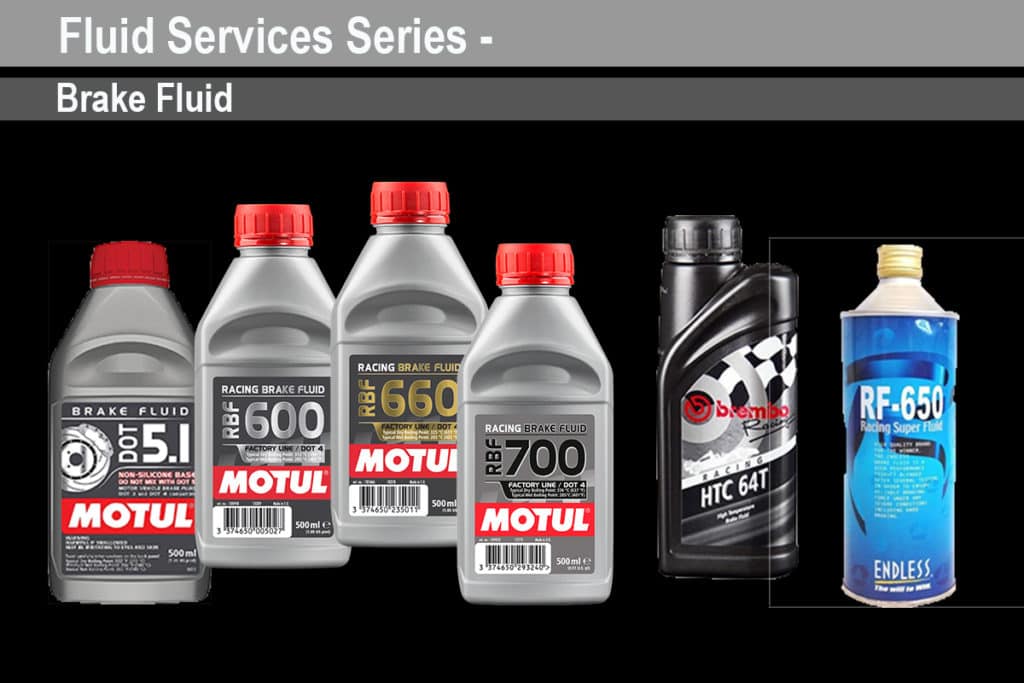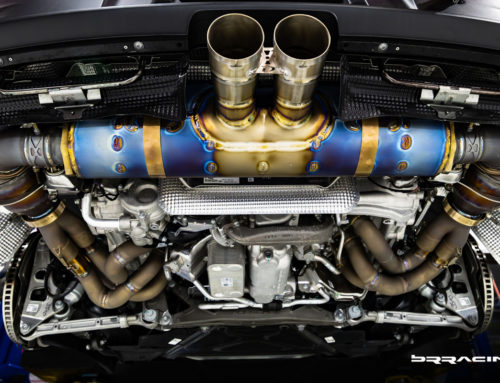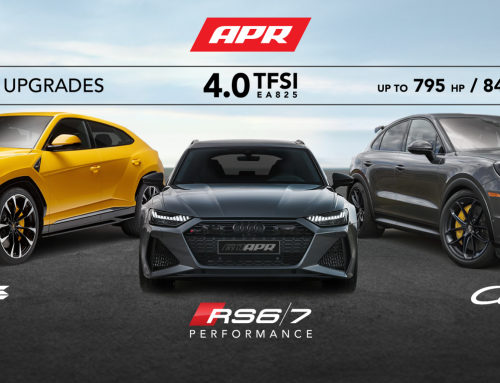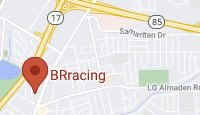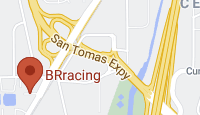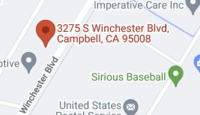With more and more cars incorporating “conditional based service warnings”, we felt it wise to review the basics of brake fluid and brake fluid service or flush. We will first review all the technical elements, definitions, and then review the service intervals that either street cars (normal factory maintenance), and track users should follow. The number of brake fluid suppliers is daunting, and for the most part, they are all the same….it’s just brake fluid, right? Even the product naming can be confusing, it is hard to understand the differences and value of the various solutions. Here is a breakdown of the ABC’s of brake fluid.
Few items in modern motorsports have been marketed to professional racers and enthusiasts as “creatively” as brake fluid. While seemingly simple, brake fluid is saddled with just enough chemistry and material science terms to quickly outpace even most race engineers. Some terms have been tossed around with so little clarity that their true meanings are often misinterpreted, if not misrepresented altogether. Add in a few tales, and no wonder people throw up their hands and say, “Forget it! Just give me whatever!”
“Wet” versus “dry” boiling point?
Compressibility?
Hygroscopic?
DOT 3, DOT 4, DOT 5, DOT 5.1….
What’s all this gibberish mean anyway? If you want to know what is most important about brake fluid (and how picking the right one will give you more time to work on driving the car), reading these ABC’s will help put you at the top of the class in Brake Fluid Science 101. Or, at least you’ll know why people pick the fluid they do, and how often you need to have your brake fluid changed.
Brake Fluid Specifications:
Starting at the place most of us heard about when looking at brake fluid for the first time, the U.S. Department of Transportation (DOT) has laid out some specific criteria for brake fluid labeling. The physical characteristics were sorted out by the Society of Automotive Engineers, or SAE. The same group that mapped out motor oil viscosities decades ago.
It is important to understand that the U.S. DOT does not test nor approve brake fluid. Anyone stating they offer a DOT-approved fluid is demonstrating they know a lot more about selling than about selling than their own product. The DOT does publish standards that various manufacturers claim to meet on their label. Each must do independent lab testing to rightfully claim their product has been validate to “meet or exceed” the associated DOT specifications. This is done to assist a technician who needs to reach for the appropriate fluid when servicing any type of vehicle, regardless of the brand. If the reservoir cap says DOT 4, he is only responsible for putting in more DOT 4 fluid. That would seem straightforward…but …
All brake fluids sold in the U.S. market must comply with Federal Motor Vehicle Safety Standard #116 (FMVSS116). Under this standard are four DOT minimum specifications for brake fluid. They are DOT 3, DOT 4, and DOT 5.1 for fluids typically based on Plyalkylene Glycol Ether and DOT 5 for silicone-based fluids. Just by themselves, these four specs are confusing enough to keep straight, so let’s go over some of the more basic terminology. NOTE – this can not be stated enough times – DOT 5 is NOT compatible with any of the others (DOT 3, DOT 4, or DOT 5.1) and must never be mixed with any of them!! The DOT naming convention turned out a bit unfortunate in the end, so please read the following explanations.
Understanding Brake Fluid Terms:
Dry Boiling Point
For all DOT compliant fluids, this is the temperature at which the fluid begins to boil when tested in the manner specifically described by the DOT. For the more techie of you, the correct term is the Equilibrium Reflux Boiling Point (ERBP). This basically means the fluid is tested brand-new, right out of freshly opened bottle or container, before being contaminated by moisture, other fluids or the paint it secretly desires to ruin in your engine bay or trunk.
Wet Boiling Point
This is a similar test to the Dry Boiling Point, but this time performed on the fluid after it has had time to absorb moisture from its surroundings. Specifically called the Wet Equilibrium Reflux Boiling Point (Wet ERBP), this is the temperature the fluid begins to boil when tested in accordance with the DOT procedure. An interesting fact is that the fluid being tested is NOT checked for moisture content, but a reference fluid sitting close by is. When the reference fluid reaches 3.70% +/-0.05% water content by weight, the fluid being tested is then put through the same procedure as for Dry ERBP to get the Wet ERBP. What this means is that the test fluid may or may not have had the same moisture content as the reference fluid (3.7%). The actual moisture content of the fluid being tested depends entirely on its chemical properties and manufacturing methods. In reference to the DOT (or SAE) test, a typical DOT 3 fluid might contain 3.0 – 3.5% moisture, while a DOT4 fluid will typically contain a 4.0 – 4.5% moisture content by volume. Translation: a regular DOT 4 fluid will absorb moisture faster than a regular DOT 3 fluid.
NET – why have a “wet” and “dry” boiling point? Wet Boiling Point is an estimate of the amount of water that the brake fluid will have absorbed after a year in use. Given this gain in moisture, this is why brake fluid is supposed to be changed on street cars every 2 years. If the climate where your car resides has slightly higher humidity, then the brake fluid flush interval may be even less.
Interesting point = Since a brake fluids boiling point or ability to absorb moisture increases the longer it is in use, it is best to do a flush just before an event or race or session. Or, in these post COVID times, your car may have hardly been driven over the past few years, but nonetheless, your brake fluid is absorbing more and more water content.
High Temperature Stability
This is the measure of how stable the dry ERBP temperature is as fluid temperature increases, applying universally to all grades of brake fluid. The specification per FMVSS 166 reads, “…The ERBP shall not change by more than 5.4 degrees F (3 degrees C) plus 0.05 for each degree the ERBP of the fluid exceeds 437 degrees F (225 degrees C).” For a fluid with a high dry boiling point, this calculates to a ERBP that could vary in either direction by as much as 14.05 degrees F (9.97 C).
Viscosity
This is where the DOT 3 spec could be interpreted as actually being better for the miniature passages of an ABS system than the DOT 4 spec. Using the example of motor oil, the higher the viscosity number, the slower the flow of the (thicker) oil. The same basic principle applies to brake fluid, although the measurement technique is different. The DOT 3 specification for viscosity at -40 degrees F is 1500 mm2/sec, where DOT 4 is 1800 mm2/sec. So, the DOT fluid flows better at the cold testing temperature than the DOT 4. To confuse the issue even further, DOT 5.1 fluids were developed specifically to better meet the lower viscosity requirements of the more complex ABS and DSC systems, while also meeting the higher boiling point specifications of DOT 5 silicone based fluids. It should also be noted the viscosity specification at 212 degrees F / 100 degrees C for all DOT variants is 1.5 mm2/sec. While it may be better for those who race snow machines above the Artic Circle to choose a brake fluid with a lower viscosity, fluids with a higher viscosity number at the lower test temperatures usually provide a better and more consistent braking feel (this is the important point for street cars, track cars, and race cars).
Compressibility
This isn’t a scientific element, nor is there published metrics or definitions, but in our experience for track cars, there is a big difference in the compressibility of the various brake fluids. We have not noticed any during normal street driving, but once subjected to higher temps, there is a difference.
For track users, this is a critical element. If the compressibility changes under use, you can not depend on how strongly your car will stop, and therefore, your braking point will change or be off. For the most part, the better the fluid (higher boiling point), the less change under duress, and the more consistent the brake pedal. Given the critical importance of this, if we have tested and experienced a loss of compressibility, we will have dropped the fluid from those we offer.
Table of Various Brake Fluids (these are all the brake fluids BRracing offers its customers)
MOTUL 5.1
DOT 5.1, 100% synthetic
Meets the ISO standard for DOT3, DOT4, and DOT 5.1
Dry Boiling Point = 272C
Wet Boiling Point = 185C
Enables longer use cycles, or for higher humidity climate
This is our “go to” fluid for street car brake fluid service
MOTUL 600
DOT 4, 100% synthetic
Meets the ISO standard for DOT3, DOT4, and DOT 5.1
Dry Boiling Point = 312C
Wet Boiling Point = 205C
This is the base line if you are ever taking your car to the track, or autocross. If you are an aggressive mountain driver, this is the baseline for you as well.
MOTUL 660
DOT 4, 100% synthetic
Meets the ISO standard for DOT3, DOT4, and DOT 5.1
Dry Boiling Point = 328C
Wet Boiling Point = 204C
If you are doing lots of track days, and are not overly aggressive, then this fluid is a solid choice.
MOTUL 700
DOT 4, 100% synthetic
Meets the ISO standard for DOT3, DOT4, and DOT 5.1
Dry Boiling Point = 336C
Wet Boiling Point = 205C
Brembo HTC-64t
DOT 4, 100% synthetic
Meets the ISO standard for DOT3, DOT4, and DOT 5.1
Dry Boiling Point = 335C
Wet Boiling Point = 205C
Track use brake fluid, very little loss of compressibility at higher temps
Castrol React SRF
DOT 4, 100% synthetic
Meets the ISO standard for DOT3, DOT4, and DOT 5.1
Dry Boiling Point = 320C
Wet Boiling Point = 270C
One of the most popular racing / track use brake fluids. While the “wet” boiling point is the highest of all the fluids, we have not found the fluid to be as good as Endless.
Endless 650
DOT 5.1, 100% synthetic
Meets the ISO standard for DOT3, DOT4, and DOT 5.1
Dry Boiling Point = 328C
Wet Boiling Point = 218C
In our view, this is the best brake fluid there is. Used by Mercedes on their F1 cars, used by Porsche in the SuperCup series, this fluid lasts longer between bleeds than any other we have used, consistent compressibility as well
Brake Fluid Flush Service Intervals
Street cars – almost all manufacturers agree that the brake fluid should be changed every 2 years
Track cars – really depends on how much heat you generate from your braking. The more heat generated, the more frequent the bleed / flush. For our race cars, we find that given the extreme amount of heat they generate, we have to bleed the brakes every day (and this is using Endless fluid…if we were using Castrol, we have had to do a bleed even mid day). If your not an animal on the brakes, and your not running full race brake pads (which generate more heat due to the increased friction), then you can lengthen your bleed intervals.
If you are tracking your car, at a minimum, no matter what fluid you are using, your fluid should be changed every year.
